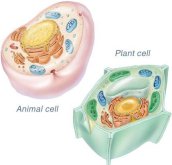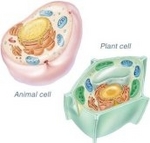
Worksheets and No Prep Teaching Resources
Reading Comprehension Worksheets
Life Science
Photosynthesis

Life Science
 Worksheets and No Prep Teaching Resources Reading Comprehension Worksheets Life Science Photosynthesis |
 Life Science |
| edHelper's suggested reading level: | grades 5 to 8 | |
| Flesch-Kincaid grade level: | 7.62 |
|
Plant vs. Animal
By Cindy Grigg |

|
 1 Cells can be found in all living things. There are several types of cells. They are usually separated into prokaryotic (pronounced "proh-KAR-ee-AH-tik") or eukaryotic (pronounced "yoo-KAR-ee-AH-tik") and are either plant or animal cells. An "animal" cell could be anything from a tiny, one-celled microorganism like an amoeba to a nerve cell from your brain. Plant cells are cells found in any plant that uses photosynthesis to make its own food.
1 Cells can be found in all living things. There are several types of cells. They are usually separated into prokaryotic (pronounced "proh-KAR-ee-AH-tik") or eukaryotic (pronounced "yoo-KAR-ee-AH-tik") and are either plant or animal cells. An "animal" cell could be anything from a tiny, one-celled microorganism like an amoeba to a nerve cell from your brain. Plant cells are cells found in any plant that uses photosynthesis to make its own food. |
Create Weekly Reading Books
Prepare for an entire week at once! |
| Leave your feedback on Plant vs. Animal (use this link if you found an error in the story) |
 |
Life Science
|
 |
Photosynthesis
|
 |
Plant and Animal Cell Worksheets | edHelper.com
|
 |
Science
|